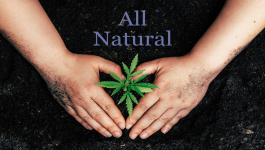The yellow-eyed grass flower is a breathtaking sight that can add a touch of sunshine and beauty to any garden or landscape. Its delicate, yellow petals and striking black center create a striking contrast that can turn heads and soothe souls. But, while this flower is certainly a wonder to behold, it's essential to understand if it poses any risks to other plants or pets.
In this article, we'll explore the yellow-eyed grass flower's characteristics, care requirements, and potential hazards, so you can make informed decisions about incorporating it into your gardening endeavors.
Yellow-Eyed Grass Flower: Overview
The yellow-eyed grass flower, also known as Sisyrinchium, is a genus of perennial plants that belong to the Iris family. It's native to North and South America, and it's often found in wetlands, meadows, and rocky areas. The plant can grow up to two feet tall, and its leaves are slender and grass-like.
The yellow-eyed grass flower blooms from late spring to mid-summer, producing clusters of bright yellow flowers that typically last for a few weeks. It's a hardy plant that requires minimal care, making it an ideal choice for novice gardeners.
Care Tips for Yellow-Eyed Grass Flower
Yellow-eyed grass flowers are relatively easy to grow and maintain. Here are some care tips to help you keep your plants thriving:
- Soil: Yellow-eyed grass flowers prefer moist, well-draining soil that's rich in organic matter. They can tolerate a range of soil types, but they don't do well in soil that's too dry or compacted.
- Sunlight: These plants thrive in full sunlight or partial shade. They can tolerate some shade, but too much can affect their blooming.
- Watering: Yellow-eyed grass flowers require regular watering, especially during hot, dry weather. Water them deeply and consistently, but avoid overwatering, which can lead to root rot.
- Fertilization: These plants don't need frequent fertilization. You can add a slow-release fertilizer in the spring to provide nutrients throughout the growing season.
Potential Risks of Yellow-Eyed Grass Flower
While yellow-eyed grass flowers are generally safe for humans, they can pose some risks to other plants and pets. Here are some potential hazards to be aware of:
- Invasive: Yellow-eyed grass flowers can be invasive in some areas, spreading quickly and crowding out other plants. If you're planting them in your garden, make sure to keep them contained.
- Toxicity: While yellow-eyed grass flowers are not toxic to humans, they can be poisonous to pets, especially cats and dogs. The plant contains glycosides, which can cause vomiting, diarrhea, and other digestive problems if ingested. If you have pets, make sure to keep them away from these flowers or supervise them when they're near them.
- Allergies: Some people may develop allergies to yellow-eyed grass flowers, especially if they have a history of plant allergies. If you experience any symptoms such as itching, sneezing, or watery eyes after being around these flowers, avoid them in the future.
Final Thoughts
The yellow-eyed grass flower is a stunning addition to any garden or landscape, but it's essential to understand its characteristics, care requirements, and potential risks before planting it. With the right care and precautions, you can enjoy the beauty of this flower without any adverse effects on your other plants or pets.



